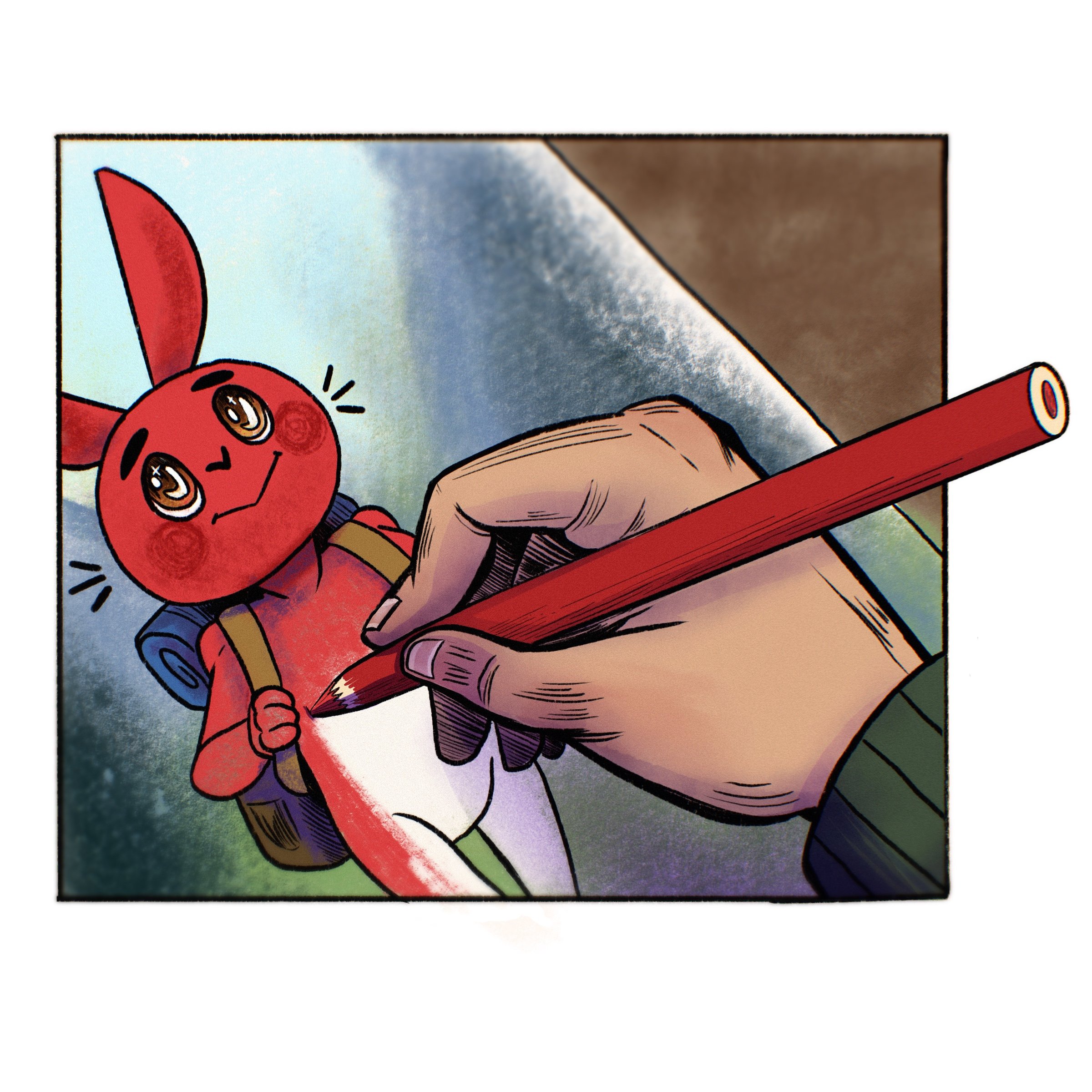Art by Analise Black
How do I beat a saturated market, win over art directors, and inspire my students? Lee White, Will Terry, and Anthony Wheeler share the keys to these questions and more in this episode.
ASK A QUESTION
JOIN US ON PATREON
Note: We’ve done our best to provide relevant links to products mentioned in this podcast. Qualifying purchases support SVSLearn and the 3 Point Perspective podcast. Thank you for your patronage!
SHOW LINKS
Anthony Wheeler: anthonywheelerart.com, Instagram @anthonywheelerart, Twitch
KEY TAKEAWAYS
Humans are relational by nature. Expressing interest in people changes how they treat you and will open many doors in your career and life.
It’s possible to be both kind and strategic. Don’t waste opportunities to make sincere connections that could help you down the road.
Your humanity sets you apart from AI and other artists. You possess a vision that will only come into existence through you. Don’t be intimidated by perceived competition; focus on creating your unique work.
It’s not a teacher’s job to motivate their students.
If you’re a student, prove you are a worthy time investment by working hard on your own, asking for help, and applying everything you learn.
QUESTIONS
Christian asks, “How can a beginning illustrator stand out in an oversaturated market full of low-quality art?”
Some people worry about losing jobs to starving artists who will accept lowball offers. Others are concerned about AI making illustrations cheap and accessible. Who could outcompete that?
Two things can set you apart: your skills and your humanity.
Really good art is hard to make, and most people won’t put in the work to be able to create at a high level. If you do, you’ve already got a considerable advantage on the competition. The best clients understand the value of your work and will be willing to pay you accordingly, rather than favoring the lowest bidder.
On top of your artistic skills is your individuality. Whether you’re making personal projects or client work, you bring a vision to the table that no computer program can. While AI is becoming increasingly sophisticated, it’s not you; you have stories to tell and images to create that have only ever existed in your imagination. You’ll always have something unique to offer. So don’t fear being replaced or lost in the crowd; tell your stories, help people, make great art, and connect on a human level in order to stand out.
Haven asks, “You talk about the students who promise to do great work and then can't deliver because they don’t put in the effort. Since you know this is a red flag, have you ever intervened, and if so, how?”
This depends on the education level of the students. In middle school or high school, speaking belief into a student can make all the difference in their life. By college, however, you’re working with adults, and if those adults aren’t self-motivated, there’s little you can say to change them.
Low-effort students tend to have talent but put in very little groundwork (few thumbnail sketches or studies) and don’t make changes to their initial ideas. They settle for “good enough.” Often, they don’t turn in any work at all.
It’s not a teacher’s job to motivate their students. A good teacher is eager to sit down with a struggling student, especially when that student can show what efforts they’ve already applied, but the same teacher won’t waste time trying to help a student who doesn’t show any desire to improve.
As a student, the ball is in your court. To make the most of your teacher’s time, do as much work as you can on your own first. Then, show your teacher what you’ve tried and where you’re still struggling. Don’t wait for them to seek you out; approach them first. Prove that you’re a worthy investment of their time by applying what they teach you.
Rachel asks, “Recently I started applying your advice and reaching out to publishers and art directors in search of freelance work. I have received some positive reception but no job offers. The response is always, ‘Love your work, let's keep in touch.’ What is the email etiquette at this stage and how do you turn ‘keeping in touch’ into a job?”
If an art director asks to keep in touch, take them up on it! Don’t try to schedule formal meetings or email them every day, but do stay connected. Email them about every six weeks with a few lines and a picture or two of whatever you’re working on. Don’t ask them for anything and don’t expect a response, but let them become familiar with you and your work.
A great way to build relationships with art directors and editors is to follow their work on social media. When you read an article they’ve written or see something cool they’re working on, shoot them a DM and share a sincere compliment. This can spark a conversation that leads to a deeper professional relationship.
On top of your artistic abilities, good communication and generosity make you very attractive to work with. While you shouldn’t compliment people just to land a job, taking an interest in others can open doors that would otherwise be closed to you. It is not only possible but wise to be both kind and strategic.
LINKS
Jake Parker: mrjakeparker.com. Instagram: @jakeparker, Youtube: JakeParker44
Will Terry: willterry.com. Instagram: @willterryart, Youtube: WillTerryArt
Lee White: leewhiteillustration.com. Instagram: @leewhiteillo
Daniel Tu: danieltu.co.
Lily Camille Howell: lilycamille.com
If you like this episode, please share it, subscribe, and let us know your thoughts or if you learned something new!
If you want to be a part of the discussion and have your voice heard, join us atforum.svslearn.com.

